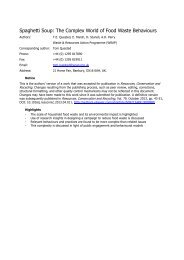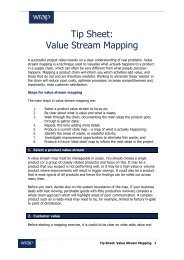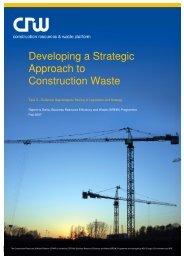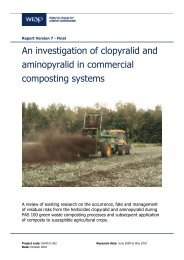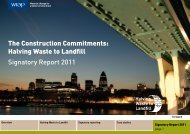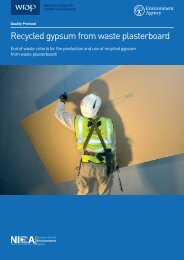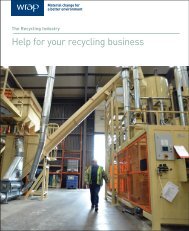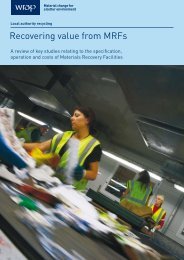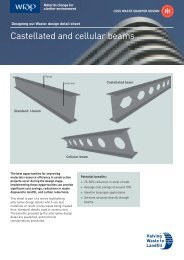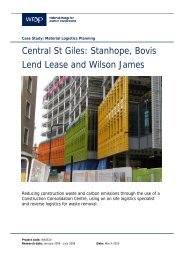Setting a requirement for Waste Minimisation and Management - Wrap
Setting a requirement for Waste Minimisation and Management - Wrap
Setting a requirement for Waste Minimisation and Management - Wrap
Create successful ePaper yourself
Turn your PDF publications into a flip-book with our unique Google optimized e-Paper software.
2 <strong>Setting</strong> a <strong>requirement</strong> <strong>for</strong> <strong>Waste</strong> <strong>Minimisation</strong> <strong>and</strong> <strong>Management</strong><br />
<strong>Setting</strong> a <strong>requirement</strong> <strong>for</strong> <strong>Waste</strong> <strong>Minimisation</strong><br />
<strong>and</strong> <strong>Management</strong><br />
This guidance sets out the business case <strong>for</strong> construction clients<br />
<strong>and</strong> developers to adopt good practice waste minimisation <strong>and</strong><br />
management on their construction projects. It explains why good<br />
practice waste minimisation <strong>and</strong> management is important, how it<br />
is delivered <strong>and</strong> the crucial role that clients can play in its delivery.<br />
Why take action?<br />
■ Reduce the cost of materials supplied <strong>and</strong> associated waste disposal.<br />
■ Increase competitive advantage through differentiation.<br />
■ Improve per<strong>for</strong>mance against CSR objectives.<br />
■ Lower CO 2 emissions.<br />
■ Meet planning <strong>requirement</strong>s.<br />
■ Complement other aspects of sustainable design.<br />
■ Respond to <strong>and</strong> pre-empt changes in public policy, such as<br />
increases in L<strong>and</strong>fill Tax.<br />
Who is taking action?<br />
Construction clients, developers, policy-makers <strong>and</strong> planning<br />
authorities are increasingly asking design teams <strong>and</strong> contractors to<br />
implement good practice in waste minimisation <strong>and</strong> management.<br />
Major organisations at the <strong>for</strong>efront of the initiative include:<br />
■ property developers such as British L<strong>and</strong>, Hammerson<br />
<strong>and</strong> Stanhope;<br />
■ members of the Major Contractors Group such as Bovis Lend<br />
Lease, Skanska <strong>and</strong> Wates; <strong>and</strong><br />
■ national Governments proposing to make Site <strong>Waste</strong> <strong>Management</strong><br />
Plans m<strong>and</strong>atory.<br />
What is good practice?<br />
<strong>Waste</strong> minimisation <strong>and</strong> management follows the principles of the<br />
waste hierarchy: reduce the quantity of waste generated, then<br />
maximise the amount that can be reused or recycled. Good practice<br />
involves going beyond the current baseline per<strong>for</strong>mance of the<br />
construction industry, which has historically focused on meeting its<br />
legal obligations only.<br />
<strong>Waste</strong> minimisation includes a range of methods to ‘design-out’<br />
waste from a project <strong>and</strong> limit waste arisings during the construction<br />
phase. Examples include:<br />
■ efficient design solutions;<br />
■ improved materials logistics <strong>and</strong> storage;<br />
■ off site construction; <strong>and</strong><br />
■ minimising over-ordering.<br />
Using a single skip <strong>for</strong> all waste types is a missed<br />
opportunity to implement good practice<br />
The emphasis<br />
should be on<br />
the contractor<br />
to develop the<br />
targets <strong>for</strong><br />
waste reduction<br />
<strong>and</strong> recovery




